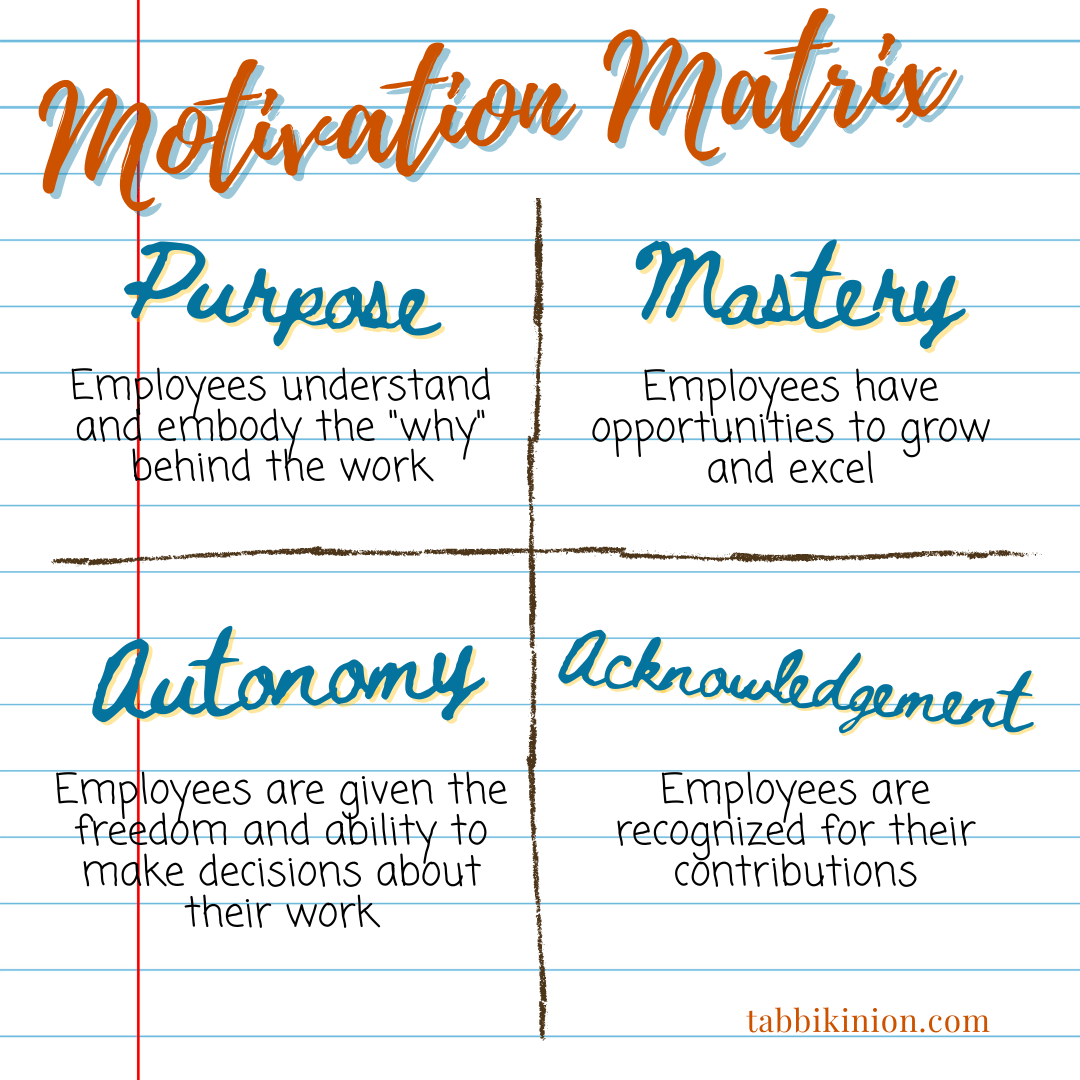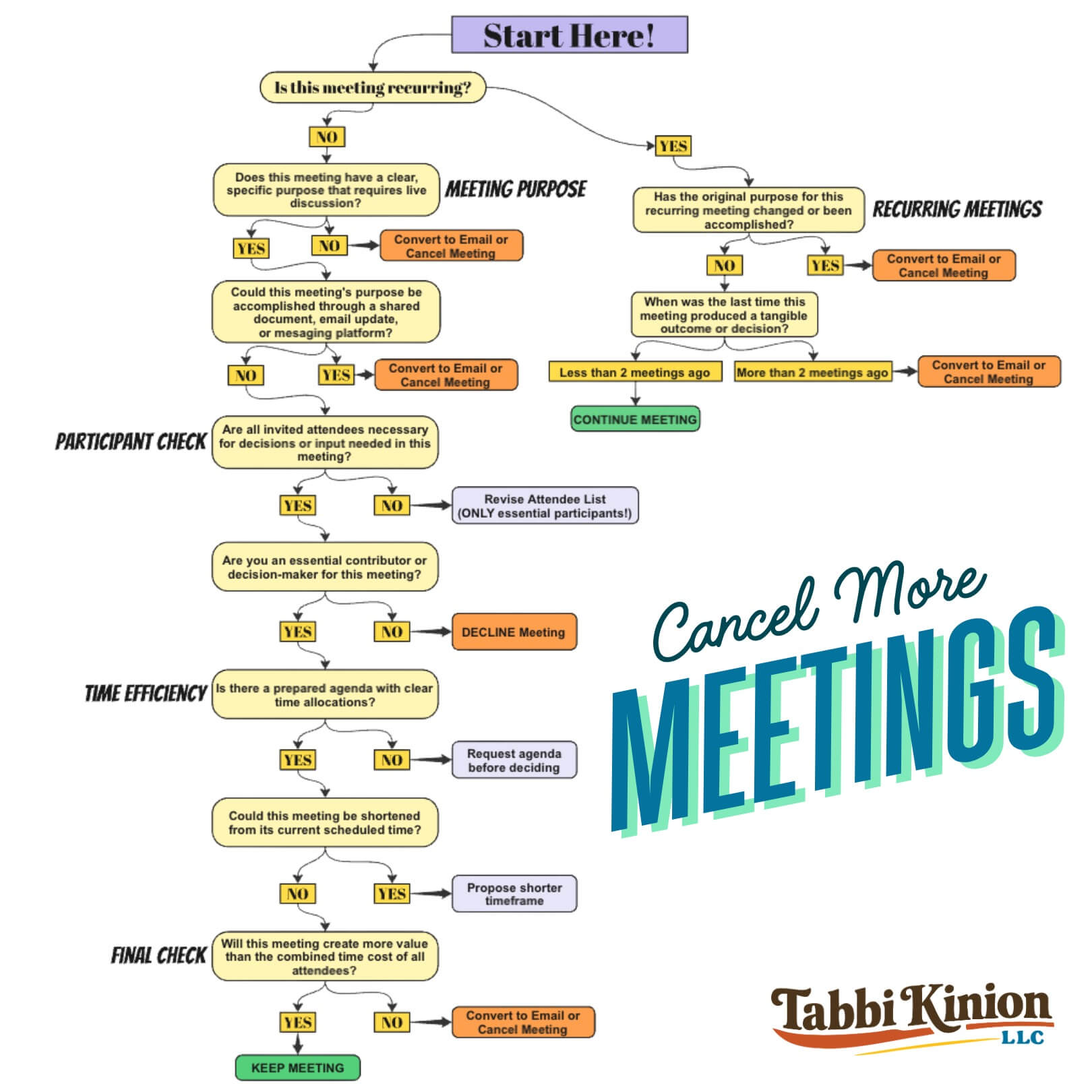
As I prepare to work with more than 100 new leaders this month, I’ve been focused on creating training sessions that incorporate the hard-won leadership lessons I learned through trial and error. Lessons that I wish someone had shared with me when I was first leading a team of employees. Things I wish I could go back and tell my 24-year-old self, who was in charge of seasonal naturalists who were older than my parents.
First off, let’s be super clear, I wasn’t ready to be anyone’s boss when I walked in the door for my first full-time job out of college. I was barely prepared to be a full-time employee. However, someone had to be in charge of the seasonal employees—and I was the new kid. Literally.
Things I didn’t do right included:
- I didn’t set clear expectations. I left them to figure it all out.
- Forgot to tell them they did a good job.
- Only paid attention to their schedules in order to make sure that all of the nature center programs were covered.
- Didn’t tell them that you can’t freeze a whole skunk (it was road kill, and they knew we needed a tanned skunk skin for an exhibit). We all learned the hard way that when you do freeze a whole skunk, the scent glands expand and… well, you can imagine the rest. There may be a faint smell of skunk still hanging out in that basement today…
Things I think I started to get right from the beginning:
- Getting to know people and ensuring they understood their job responsibilities.
- Teaching them how to effectively teach and lead programs.
- Letting my enthusiasm for the job rub off on them.
- I delegated projects that I couldn’t manage on my own.
Things I would go back and tell myself that I learned over time:
- Stop avoiding conversations and being angry at them for not knowing how things were supposed to be done; it was a waste of time and energy for everyone.
- Talk with them to identify the skills they bring to the table and what they want to develop, and delegate tasks to them accordingly.
- Say thank you more often. Every day. Be honest about it.
- Ask them instead of telling them. Saying, “Would you cover the desk for an hour?” is a far superior way to delegate than “I need you to cover the desk for an hour now.” It is a sign of respect to ask them.
- Stop saying, “It’s just easier to do it myself.” Taking over does not help your employees grow.
A few years after I started at that skunk-smelling nature center, I moved to a statewide education position with the state wildlife agency. The Deputy Director at the time pulled me into his office and told me that I would be a leader someday, and that I needed to start building my leadership skills. From the first week-long new manager series I attended 18 years ago, I was hooked on leadership and skill development. Now, I get to be the person who develops leaders like you.
The skill I teach now that no one taught back then? How to successfully make the shift from being the rockstar individual contributor to the leader in charge of the individual contributors. Because there is often so little training for new managers, many new leaders fall into four super common traps.
New Leader Traps
And I'm calling these traps because that's precisely what they are. They may seem like the right thing to do, but they feel comfortable, and yet they'll absolutely sabotage your leadership success.
And if you HAVEN'T fallen into at least one of these as a new leader, you are truly extraordinary. And if you HAVE fallen into these, welcome to the club. You are completely normal.
- The Specialist Trap
This is where you stay camped out in your technical comfort zone instead of developing the broader skill set you actually need as a leader. I get it. You're really good at the technical stuff! It's more enjoyable and comfortable to continue doing that work.
But here's what happens: You've got a wildlife biologist who's now supervising a team, but they're still spending 80% of their time perfecting research methodology instead of learning how budgets work, how to manage stakeholder relationships, or how to think strategically about program direction. How does a team perform under a leader who's not taking care of the tasks that make it possible for them to do their jobs?
- The Micromanagement Trap
This is the classic 'I can do it faster and better myself' syndrome. And you know what? You can do it faster and better. Right now. But that short-term efficiency is creating long-term team dependence.
Every time you take something back and do it because it's easier than allowing someone to figure it out for themselves, you're training your team that they don't need to step up. That if something is hard, you'll just do it for them.
- The Hero Complex
This is when you constantly swoop in to personally solve every problem that comes up - because you have the expertise to solve these problems. You think you're being helpful, but what you're really doing is preventing your team from developing their own problem-solving skills. They start waiting for you to rescue them instead of thinking through solutions themselves.
- The Expertise Addiction
This is about being the smartest person in the room about the topic. Which, is common for overachievers who get promoted, right?
The cost? Your team stops thinking critically and becomes passive. They figure, 'Why bother thinking this through? The boss will just tell us what to do anyway.'
Here's a real-life example from the field: I worked with a fisheries supervisor who continued to personally review every single creel survey, rather than training their technicians and establishing quality control systems.
The result? An overworked supervisor, an undertrained staff, and they missed opportunities for program expansion because the supervisor was buried in data sheets.
The truth is, all four of these traps feel productive in the moment. And for some managers, they never escape these traps. However, they're keeping you stuck in the individual contributor mindset when you need to think like a leader.
The Emotional Toll of Becoming a Leader
Not only do we all have to navigate these traps, but becoming a leader has some serious emotional consequences that most people never tell you about. So, let’s talk about the emotional reality of making the shift from doer to leader. Because being promoted to a management role isn't just about changing what you do during the day, it is about letting go of who you've been professionally for years, maybe even decades.
Let's be honest about what you're really giving up here.
First, after years of being the expert, you're now letting go of being the person with all the technical answers. For years, people came to YOU when they had questions about what to do, methodology, what to teach, how to handle specific issues, or protocols. That felt good, didn't it? It validated your expertise and made you feel valuable at work. But now, people might start going to your team members with technical questions instead of you. That stings a little, doesn't it?
Then, most of the time, you're giving up individual recognition and achievements. Remember that feeling when your research got published, you got the award for a great project, or when you solved a particularly challenging problem? Now your wins come through other people's success, and frankly, that doesn't always feel as satisfying.
Third, you're losing the immediate satisfaction of daily hands-on productive work. There's something deeply rewarding about helping a customer, making a sale, or completing a project from beginning to end on your own. Now, you find yourself sitting in meetings about budgets and personnel issues? It’s just a different type of work and you suddenly discover that your traditional sense of productivity is gone. You used to end the day knowing exactly what you accomplished - tasks completed, sales won, reports written. Now you spend half your day in conversations and meetings that don't feel like 'real work.'
This shift feels like a loss. You worked hard to get promoted, only to have to give up the work you loved. And that's completely normal. You're not just changing jobs. You're transitioning from one professional identity to another.
It's okay to grieve the person you used to be at work. Acknowledge it, feel it, and then let's talk about what you're gaining in return.
The Rewards of Becoming a Leader
Now let's flip the script and talk about what you're gaining, because this is where leadership gets good.
Where the shift becomes the most rewarding work.
As a leader, instead of completing one large-scale project per year, you're now enabling your team to complete multiple projects simultaneously. Your impact isn't just additive, it's exponential. You're not just doing the work anymore; you're multiplying the work that gets done.
You're now developing the next generation of professionals. Think about the people you worked for who influenced your career early on, you're now that person for others. The knowledge and skills you pass on will continue making conservation impact long after you've moved on.
You're positioned to solve larger, more complex challenges. Climate adaptation, economic challenges, AI integration, new customer service systems. You now have a seat at the table for big issues that require teams, not individuals. As a leader, you tackle problems that were beyond your reach as an individual contributor.
Finally, you're not just managing your little corner anymore. You're shaping how work gets done by others. The systems you build, the people you develop, the culture you create, that ripples out far beyond your immediate team.
What most leaders will tell you, including me, is that seeing your impact multiplied through others, when you watch people you've developed succeed, and when you solve problems that are bigger than any one person could tackle, that's a different kind of professional fulfillment entirely.
I had a mentor who retired from the US Forest Service, and Steve once told me that a leader's job is to roll rocks out of the way so the employees can get the real work done. It stuck with me. You are now the rock-roller for the people on your team.
Go enjoy that your hard work puts you out in front, rolling rocks off the trail for your people. 🪨

That Sinking Feeling…
Picture this: You're sitting in the conference room at your office with your team, your boss, and, oh joy!, your boss's boss. Your palms are sweaty as you glance at the agenda, knowing item #3 is "Henderson Project Budget Review." Last week, you made a calculation error that cost the project a few hundred dollars. Not career-ending, but definitely not your finest moment. You let your boss know right away and have dealt with this one-on-one, but your hands are sweating because, well, you’ve seen what happens before.
Your boss pipes up when the group arrives at that agenda item. "Speaking of wasting company money," they announce, looking directly at you, "someone decided basic math wasn't important on the Henderson project." You feel your mouth go dry. They continue with a sarcastic play-by-play of your mistake and what it cost the company while everyone watches, some with pity, others with a smirk of “I’m glad it’s your turn.” You stare intensely at your notebook, wishing you could dissolve into the carpet until it is over.
Can you feel that sensation crawling up your neck? The burning in your cheeks? The clenching in your stomach? Maybe the desperate desire to disappear?
That's shame. And humans do all we can to avoid it. It is one of the most powerful and destructive emotions we experience. And as leaders, we have the uncanny ability to trigger this feeling in our team members with alarming ease.
When Leaders Weaponize Shame
As leaders, we hold tremendous power over our team's emotional landscape. When we publicly call out mistakes, use sarcasm as a weapon, or make examples of people, we're not "teaching valuable lessons" or "holding people accountable." We're purposefully activating feelings of shame as a power move, whether intentional or not.
The leadership AND psychological research is crystal clear: shame doesn't improve performance. Quite the opposite.
When we shame our team members, we:
- Destroy psychological safety (the foundation of innovation and creativity)
- Damage their mental health and well-being
- Tank productivity as people focus on avoiding humiliation rather than doing great work
- Drive away top talent (91% of employees cite poor communication, including public criticism, as what makes leaders ineffective)
- Make ourselves look like a-holes (that’s not listed in the literature, but we all know it’s true.)
Shame vs. Guilt: A Critical Distinction 🔍
Understanding the difference between shame and guilt is important when you are dealing with employees who make mistakes.
Guilt is: "I made a mistake." (Action-focused) Shame is: "I am a mistake." (Identity-focused)
Guilt can actually be productive. It focuses on behavior that can be changed or avoided in the future. Shame attacks a person's core sense of self and worth. When team members feel shame, they don't think, "I'll improve next time!" They think, "I'm not good enough to be here."
Brené Brown calls shame a "soul-eating emotion" for good reason. It doesn't drive improvement, it drives disconnection, disengagement, and despair.
Our Goal: Accountability Without Shame 🔑
Great news! We can maintain high standards AND create a shame-free environment.
Here's how:
- Keep your feedback private. Address mistakes one-on-one, not in front of an audience. The conversation is the same, but the impact is entirely different. You’ve heard the saying, “praise in public, correct in private”, right? Shame is why this is important.
- Focus on actions, not identity. "This report needs more data," rather than "You're always sloppy with your research."
- Connect to learning, not failure. "What can we learn from this?" creates forward momentum while "How dare you mess this up!" creates paralysis.
- Model healthy mistake-handling. Share your own learning moments openly. Teams follow your lead on how mistakes should be treated.
- Distinguish between types of failure. Was it a preventable error, a complex system failure, or an innovative experiment that didn't work out? Each deserves a different response.
Many leaders struggle with these approaches because they've never been shown how to provide accountability without shame. This is where leadership coaching becomes invaluable. A skilled coach can help you recognize when you're slipping into shame-inducing behaviors and practice healthier alternatives until they become second nature.
In the Leadership Locksmith System, we go deep into dealing with failure, where you'll learn to differentiate between types of failures and develop specific, actionable responses for each. The system walks you through exactly how to transform failure from a source of shame to a powerful catalyst for growth and innovation.
Your Leadership Challenge 🔐
I challenge you to catch yourself when you're about to trigger shame in someone else. Ask yourself:
- Am I about to make this person feel like their mistake defines them?
- Is there a way to address this that focuses on behavior, not character?
- Would I want to be addressed this way if our roles were reversed?
Remember, the best leaders aren't the ones who never make mistakes, they're the ones who create environments where mistakes become stepping stones rather than stumbling blocks.
Until next week, keep unlocking your leadership potential! 🔑

Ever had a boss who made you feel like you were drowning while they watched from the yacht? 🛥️
"You should just be over it already" was a statement from a past director that made my soul crumble and was one of the final straws in our relationship. I wasn't asking for a miracle or to change course, I just needed a life preserver of empathy. Instead? I got the leadership equivalent of a boot to the head, shoving me further underwater.
By the way, that guy is a big part of why I do what I do now. Life's too short to work for (or heaven forbid, BE) a terrible leader, and he was among the worst I ever encountered!
Empathy: Your Leadership Superpower 💪
Empathy in the workplace isn't about group hugs and participation trophies. It's your secret weapon for building unstoppable teams!
Think of empathy as the WD-40 of leadership. It reduces friction, makes everything run smoother, and gets you out of the toughest jams. It's understanding your team members are whole humans with lives beyond their spreadsheets and project plans. (And, if you love WD-40, you should check out the new book from their former CEO called Any Dumb-Ass Can Do It: Learning Moments from an Everyday CEO of a Multi-Billion-Dollar Company by Garry Ridge. He was a leader who did it right!)
True empathetic leadership doesn't mean lowering your standards or avoiding tough conversations. You'll always need to have plenty of those. Empathetic leaders approach every conversation with awareness of how what they say lands on the other person. It's pausing to think, "How might this person be experiencing this right now?" before charging ahead with your agenda.
Guess where empathy is most lacking, according to research cited in Harvard Business Review? You probably aren’t surprised that employees report that middle managers and senior executives lack empathy the most. The very people whose decisions impact the most lives!
The Empathy Advantage: Not Just Warm Fuzzies! 📈
Empathy isn't just nice—it's your competitive edge:
- Builds unshakeable trust (goodbye, revolving door of talent!)
- Boosts employee engagement (sayonara, quiet quitting!)
- Enhances problem-solving (hello, innovation!)
- Resolves conflict more effectively (farewell, team drama!)
- Creates a thriving culture (adios, toxic workplace!)
That old-school "command and control" leadership, where everyone shuts up and does exactly what they are told without question? Well, it has been proven to be ineffective because it throttles productivity, causes high turnover, and cuts deep into the profit margin. In other words, that old school approach is as outdated as fax machines and multi-part forms, where you kept the top copy.
The data doesn't lie: empathetic leadership drives tangible benefits, including higher retention rates, improved collaboration, enhanced productivity, and better customer satisfaction. It's better for business, better for employees, better for managers trying to navigate being stuck in the middle, and better for those you serve. 🎯
But, Tabbi, I'm Not Naturally Empathetic! Am I doomed to be a bad manager?😱
Good news! As Professional Wrestler/Actor John Cena (yes, that John Cena) told Drew Barrymore on her talk show, "Empathy isn't something we're born with—it's a skill." If you genuinely care about others' feelings, you can build this muscle with practice. You can watch the clip here.
Beyond skill-building, empathetic leadership requires you to shift your mindset from:
"What do I want to tell my team to do?" ➡️ "What does my team need from me to excel at what they are here to do?"
This flip will revolutionize how you lead and how your team performs!
Empathy in Action: The How-To Guide 🛠️
Here's the kicker—empathy is easy when everything's sunshine and rainbows. The real test? Those heated moments when your emotions are doing the mambo and your patience is thinner than hotel toilet paper.
Dr. Brené Brown (the empathy guru herself) breaks it down into four simple steps:
- Take their perspective - slip into their metaphorical shoes (even if they're not your style)
- Stay out of judgment - listen without your mental scorecard
- Recognize their emotion - name it to tame it
- Communicate your understanding - "I get why you'd feel that way"
Being an empathetic leader is learnable, but it takes practice. Let’s practice right now!
The "Are You an Empathetic Leader?" Quiz! 🧠
Let’s test your empathy muscles with these real-world scenarios. No peeking at the answers!
🔓 Scenario 1: The Deadline Dilemma
Sarah, usually your reliable rock star, has been missing deadlines. In a private chat, she reveals she's dealing with a family illness. How would you respond?
- "I'm sorry to hear that. Let's focus on getting your work back on track."
- "That must be difficult. How can we adjust your workload to help you manage both responsibilities?"
- "Everyone has personal problems. You need to separate work from home life."
- "I understand. Take as much time off as you need."
The empathetic leader's answer is 2. It acknowledges Sarah's feelings ("That must be difficult"), avoids judgment about those missed deadlines, recognizes her challenge, and offers practical support.
Option 1 gives a quick "sorry" before hustling back to business, 3 is the empathy equivalent of a paper cut, and 4, while seemingly kind, doesn't address the work reality or offer balanced solutions.
🔓 Scenario 2: The Idea Shutdown
During a team meeting, John's idea gets more roasted than a marshmallow at summer camp. He clams up faster than… well, a clam. He is clearly upset and disengaged for the rest of the meeting. As an empathetic leader, what's your move?
- Ignore the situation to avoid embarrassing John further.
- Criticize the team members who were harsh in defending John.
- End the meeting early and hope everyone forgets about it.
- Acknowledge John's contribution, facilitate constructive feedback, and follow up privately.
ANSWER: 4! Acknowledging John's contribution validates his experience, facilitating constructive feedback transforms criticism into growth, and that private follow-up shows you genuinely care about his perspective and continued engagement.
Easy so far, right? Well, you know it’s going to get more complicated…
🔓 Scenario 3: The Restructuring Anxiety
Your organization announces a major restructuring (cue dramatic music). Emma, usually your confidence queen, seems to panic about the change and expresses concerns about her job security. Your empathetic response?
- Assure Emma her job is safe, even if you're not certain.
- Tell Emma to stay positive and not worry about things out of her control.
- Listen to her concerns, provide available information, and offer support.
- Advise Emma to start looking for a new job, just in case.
ANSWER: 3 is the best path here. Listening acknowledges her emotions, providing information respects her intelligence, and offering support shows you care without making promises you can't keep or dismissing legitimate concerns.
🔓 Scenario 4: The High-Stakes Showdown
You're leading a diverse team on a high-stakes project when Alex and Priya turn your meeting into the verbal equivalent of WWE SmackDown. Alex says Priya doesn't understand the local market; Priya suggests Alex's approach is from the Stone Age. The tension is thicker than day-old oatmeal. Your empathetic leadership move?
- "This is unacceptable for this meeting. Alex and Priya, take this outside so we can move on."
- "I appreciate both perspectives. Alex, can you elaborate on your market concerns? Priya, explain why you think a new approach is needed? Let's see how we might blend these viewpoints."
- Agree with Alex to keep things moving, since he has more experience.
- Suggest a team vote to decide whose idea wins.
ANSWER: 2 is your best bet, even if it isn’t the easy solution! It validates both perspectives, creates space for deeper understanding, and transforms a potential division into an opportunity for integration and innovation.
🔓 Scenario 5: The Return-to-Office Rebellion
Your company drops the mandatory "everyone back to the office full-time" bomb. Jamie, your top performer, privately tells you they're considering quitting because they can't make it work with family care responsibilities. Your empathetic response while honoring company policy?
- "Jamie, I understand you're frustrated, but this policy is non-negotiable. You'll need to find a way to make it work."
- Offer Jamie a special exception to work remotely, keeping it hush-hush from the team.
- "I hear your concerns, Jamie. This transition is challenging for many. Can we discuss which aspects are most difficult? I'd like to understand better and see if there are solutions we haven't considered. I value your contribution and want to find a path forward that works for everyone."
- "You should talk to HR about this."
ANSWER: 3 wins the empathy gold medal! It acknowledges Jamie's concerns without dismissing them, seeks deeper understanding, and expresses your commitment to finding solutions that honor both organizational needs and personal circumstances. And 2 - well, 2 is a recipe for disaster on your team - secrets never stay secret and will destroy any trust the rest of your team has in you.
Ready for the last one?
🔓 Scenario 6: The Promotion Blues
Taylor, your promising mentee, has been passed over for promotion twice and thinks the process might be biased. You know Taylor's good but not exceptional, with blind spots they don't see. Your empathetically honest approach?
- "I understand your frustration, Taylor. Being passed over is disappointing. Could we discuss your career goals in detail? I'd like to share my perspective on your strengths and growth areas. We could create a development plan to strengthen your candidacy for future opportunities."
- "I agree the process might be unfair. I'll speak to senior management on your behalf."
- "Work harder. Promotions come to those who deserve them."
- "Maybe start looking elsewhere where your talents will be recognized."
ANSWER: 1 strikes the perfect balance between empathy and honesty! It acknowledges Taylor's feelings without dismissing them, offers your perspective with the intent to help (not criticize), and focuses on constructive action rather than empty promises or harsh reality checks.
So, how did you do? If you were keeping score…
Your Empathy Score:
5-6 correct: Empathy Extraordinaire! Your team probably has "Best Boss Ever" mugs in their cabinet.
3-4 correct: Empathy Emerging! You've got the basics down, but could fine-tune your approach.
1-2 correct: Empathy Explorer! Consider this your wake-up call. Your team needs more understanding.
0 correct: Emergency Empathy Intervention required! Let's talk… like, yesterday.
The Empathy Emergency Kit 🚨
For those moments when your empathy tank is running on empty:
- The 10-Second Pause: Before responding to any emotional situation, take a deep breath. Your first reaction is rarely your best one.
- The Perspective Flip: Ask yourself, "If I were in their position with their information and experience, how might I feel?"
- The Magic Phrase: "Help me understand…" These three words can transform confrontation into conversation.
- The Emotion Naming Game: Practice identifying specific emotions beyond the basic "mad, sad, glad" vocabulary. Is your team member frustrated, disappointed, overwhelmed, or anxious? Each needs a different response.
🔑 Ready to Become the Leader Everyone Wants to Work For?
Sometimes, even the most talented leaders need someone to come alongside them to help navigate challenges like showing up empathetically when it doesn't come naturally. (Think of it as having your own leadership personal trainer!)
If you're ready to level up your empathy game and unlock your team's full potential, let's chat about how the Leadership Locksmith System can transform your leadership approach.
Your team deserves a leader who gets it.
And you deserve the satisfaction of being that leader.

Unless you've been able to avoid social media, the news, and other people completely, you know that the United States is experiencing some serious political turmoil. From the heated debates about responses to the ICE operations in LA to passionate discussions about the proposed federal budget, not to mention some very public feuds in the halls of power, the political landscape is as divided as opinions about whether or not pineapple belongs on pizza.
And, as the leader of a team, you're probably thinking: "Great. Now I have to manage the budget, strategic plan implementation, AND keep my team from starting a mini civil war by the copy machine."
Leadership is hard on a slow-news day. So, with the 24-hour news cycle dropping something new every 15 minutes, your first instinct might be to declare your workspace a "politics-free zone."
Just don’t talk about it. Keep it to yourselves.
Problem solved, right?
Not quite.
Why "No Politics" Rules Usually Backfire
Here’s the thing - you have worked hard to create a workplace where your employees feel valued and like they can bring their whole self to work. So, if you were to try to ban political discussions entirely, you would damage this psychologically safe culture you've worked so hard to build.
All of a sudden, you will be seen as trying to micromanage their conversations. Let’s say I were your boss. If I had spent months or years building a relationship with you and then suddenly told you never to discuss (insert your favorite person, pet, or hobby here) because I don’t want to deal with how it impacts your life, how would that make you feel? Would that damage our trust and working relationship?
When we tell people they can't talk about something that matters to them, we are saying, "Leave that super important part of yourself at the door." This runs counter to the honest and productive environments we try to create. And I don’t need to pull up those decreased productivity and thereby decreased revenue numbers for you, do I?
Plus, let's be real, these conversations will happen anyway, just in whispers behind your back and without your guidance, which will damage your relationship with your team.
The Better Approach: Boundaries vs. Bans
Instead of trying to control what people talk about, focus on setting expectations about how they talk about contentious topics. This subtle shift is the difference between being the leader everyone avoids versus the leader everyone respects.
Setting Boundaries
Remember when you set that boundary about not checking email after 7 pm? Or when you clarified expectations about meeting preparation? You're probably already a boundary-setting pro! (If not, it’s time for a leadership coach to come alongside you and help you out!)
Setting boundaries around political discourse at the office or worksite works the same way. Identify what your team needs to feel safe and productive, communicate the expectation clearly (no beating around the bush! Start the sentence with the words “I expect that if you are going to discuss political situations, you… ), and hold to these boundaries even when it gets tough. Think of this as creating guardrails for conversation in a professional setting, not setting out roadblocks. Your team will thank you for providing structure rather than silence.
This week's leadership code word is Curiosity
There is a boundary that the research recommends to leaders in your shoes (which is consistent in the Harvard Business Review, Psychology Today, and the MIT Sloan Management Review). Create expectations that if politics is the topic at hand, employees are expected to approach their differences with respect and stay curious - they should seek to understand their differences.
So, rather than letting your team fall into debate mode (where the goal is to win), encourage them to adopt a learning mindset.
Here's how to encourage respectful and curious conversations:
- Model the respectful behavior - people do what you do, not what you say
When political topics arise, demonstrate how to engage constructively. Use phrases like "That's an interesting perspective. I'd love to understand more about how you arrived at that view." - Focus on learning, not convincing
Remind your team that the goal isn't to change minds but to understand different perspectives. Research shows that employees who use these communication strategies are five times more likely to be seen as diplomatic. - Find common ground
Even people with vastly different political views often share common values. Help your team identify these shared values, which can maintain positive working relationships despite disagreements. - Create a "complexity mindset" - things are not as black and white (or red/blue) in the real world
Encourage your team to see issues as more complex than they first appear. Once we view an issue as multifaceted, it opens the door to seeing others more fully, not just as representatives of an opposing political tribe. - Establish pause protocols - if emotions start to bubble up, expect them to step away
Give your team permission to pause a conversation that's getting too heated: "I think we should take a break from this discussion and come back to it when we've had time to reflect." - Set no-go times for these conversations
When is it ok to have these conversations? It depends on your business, but in general, when customers, contractors, or other outside people are in the room, there should be some boundaries set. Your employees are there to represent the organization, not their own beliefs, and if politics is a no-go subject, then they need to know that expectation.
When Conversations Cross the Line
I know that allowing political discourse can feel fraught and risky. And we all know that sometimes political discussions will escalate despite our best efforts. Knowing when and how to intervene is crucial for a leader.
Here's what to do when you notice tensions rising:
When political conversations start damaging working relationships, don't wait for things to cool down on their own.
Step in with:
- The Private Redirect: "Hey Sam, can I grab you for a quick chat about the Henderson project?" Sometimes simply creating space between heated parties is exactly what's needed.
- The Group Reset: "I'm noticing we've moved away from understanding and into debate territory. Let's take a 10-minute break and come back focused on our shared project goals."
- The One-on-One Follow-Up: "I noticed things got tense earlier. How are you feeling about that conversation, and is there anything we need to address before it affects your working relationship with Jordan?"
Remember, your job isn't to police thoughts but to protect the team's ability to work together effectively. When intervention is necessary, approach it with compassion rather than judgment.
A Real Leader's Approach
One of my coaching clients (let's call her Maya) was facing this exact challenge. Her team was split down the middle politically, and tensions were rising back when the election season was heating up.
Instead of banning political talk, Maya gathered her team and said: "I value each of you and the unique perspectives you bring. Let's agree that when we discuss politics, we'll focus on understanding each other rather than changing minds. And if anyone feels a conversation is becoming unproductive, they can say 'time out' without judgment."
The result? Her team actually grew closer through their differences. When people felt safe to express themselves without fear of ridicule or retaliation, they saw each other as humans rather than political opponents. And, in her opinion, because she addressed political conversations directly, the members of her team knew it was OK to have a different viewpoint than their colleagues, making it more comfortable at work for others.
Were there still moments of frustrated disagreement? Of course. But there were no tears or bullying moments that landed anyone in HR.
Your Leadership Challenge
This week, I challenge you to:
- Reflect on how political discussions are currently being handled in your workplace - is anyone feeling singled out or bullied for having a viewpoint different from most of your team?
- Identify one boundary you need to establish (or reinforce) as your team is more directly affected by what is happening.
- Have one conversation with your team about expectations for respectful dialogue.
- Practice the phrase: "I'm curious about your perspective on that," the next time a political topic arises
Remember, your goal isn't to create a team that all think alike. That would be boring AND impossible. Your goal is to create a team that can think differently while still working effectively together. They don’t have to agree on everything to do their work. But they do have to treat each other with respect to do their jobs well.
If you're struggling with navigating these complex leadership waters, you're not alone. This is exactly the kind of challenge we tackle in the Leadership Locksmith System. Ready to transform from overwhelmed manager to confident leader who can navigate even the trickiest situations? Let's chat!

What Your Sick Leave Culture Really Reveals
This week started rough - allow me to begin with a PSA…
I don't know where I got it, whether I should have washed that tomato more, or if I used a cutting board that hadn't gotten clean enough in the dishwasher after cutting up raw meat. Or it could be that new restaurant I tried. Or that coffee shop. Or something else altogether. Symptoms show up anywhere from 8 to 72 hours after being exposed.
What I do know is that while I lay in bed on Saturday night, my entire torso cramped up in the first throes of… You guessed it... Salmonella.
I've never had this terrible, awful, no-good, very bad experience before, and I am here to remind you to take extra care to avoid it yourself. Wash your fruit and vegetables with extra care, don't leave that cheese out, and double-triple wash that cutting board after cutting up raw meat. I will spare you most of the details about why you really want to do these things (though did you know that while the main infection lasts 4-7 days, the diarrhea can last up to 30 days?) - but trust me, the extra time and soap are worth it!
As I was lying in bed on Monday morning, clearly not able to work, I was reminiscing about the days when sick leave paid for me to be ill. The entrepreneur world doesn't include that benefit. And it also dawned on me that how a leader handles sick leave is an absolute litmus test of the work culture they have created.
I'm not talking about policy - most organizations have similar policies about sick leave. I'm talking about how sick leave is approached and how using it is actually perceived.
The litmus test of a culture is what happens when you are sick.
In a strong culture:
🔑 Your boss trusts that when you say you need to use sick leave, you need to use sick leave
🔑 The team automatically steps in and takes care of things, without bothering you
🔑 They check in to make sure you are OK, not to see when you're coming back
🔑 Your boss trusts that when you say you need to use sick leave, you need to use sick leave
🔑 The team automatically steps in and takes care of things, without bothering you
🔑 They check in to make sure you are OK, not to see when you're coming back
In a weak culture:
❌ You have to justify WHY you're using sick leave
❌ People call and text for "just one thing"
❌ Everything grinds to a halt in your absence
❌ You're pressured to prove you're really sick
❌ You have to justify WHY you're using sick leave
❌ People call and text for "just one thing"
❌ Everything grinds to a halt in your absence
❌ You're pressured to prove you're really sick
Just yesterday (June 3, 2025), Harvard Business Review published research confirming what many of us have experienced: Nearly 90% of U.S. employees work while sick, even when they have sick leave available. This costs businesses $150 billion annually - 10 times more than absenteeism! The problem isn't policy. It's culture.
Let me tell you about the supervisor who got this right. When I came down with pneumonia and was out for almost two weeks, my supervisor Windi checked in with me daily - because she was actually worried about me. I offered to get a doctor's note, and she laughed and said, "Don't worry about it - I have no doubt you need to use these sick days." She made sure my work was covered and forbade me from working. It was exactly what my overachiever brain needed to hear.
That experience taught me something crucial: How you handle sick leave as a leader directly shapes your team's behavior.
Before Windi taught me to stop, I was always the one in bed with my laptop, trying to answer emails coherently with a fever. It wasn't healthy, and I was setting the expectation for my team that they had to do the same.
When you send emails while sick, you're telling your team that being "always on" matters more than their health. Leaders who model healthy sick leave usage create cultures where:
- Employees actually rest when sick and return more productive
- Teams develop better backup systems and cross-training
- People stay longer because they feel valued and protected
- Everyone performs better because they're not running on fumes
Building a team that trusts you starts with showing them you trust them to take care of themselves.
Your Leadership Challenge: This week, I challenge you to this: If you feel even slightly under the weather, stay home. See what happens. Notice what fears come up, and notice how your team actually responds. The results might surprise you.
How do you handle it when your employees are sick? Do you make them feel bad or create space for them to get well? The answer reveals everything about your leadership culture.
Sick leave is just one piece of building a strong leadership culture - and great cultures happen when leaders have the support and tools they need to make decisions like this with confidence. If you're ready to unlock the leadership skills that create thriving, trust-based teams, message me to learn about the Leadership Locksmith System.

It's Not the Altitude, It's the Attitude
The afternoon sun comes and goes today as the white, puffy clouds trail by here in the Colorado mountains. At this elevation, there is a noticeable temperature drop when the intense sun is suddenly shaded. My laptop balanced precariously on my knees, and I find myself enjoying getting to work outside today while thinking about leadership. I'm thinking about leadership not as an abstract concept or as my role as a leadership trainer and coach, but as the living, breathing reality that shapes our work lives every day.
The word "leader" gets tossed around a lot, doesn't it? When people say "leader," they might mean:
- That naturally charismatic person who takes the lead in any group from the time they are a child (the "natural-born" leader)
- The community figure making waves at city council meetings
- The fly fishing guide who shows newcomers the perfect cast
- The elected official who represents constituents and shapes the collective direction
- That expert who leads the way in their field – the thought leader, the trendsetter
But when I talk about leaders, I'm focused specifically on those people whose job is to fulfill a mission by engaging with the people who do the mission-centered work of the organization. Those managers, supervisors, and directors who are responsible not just for results, but for the humans producing those results.
In the golden glow of this summer afternoon, surrounded by the vast perspective only mountains and puffy clouds can provide, I'm reminded of why leadership training lights me up like nothing else: it reveals the extraordinary power you have to change lives, including your own.
The secret that most leaders never discover?
Leadership isn't about what you accomplish – it's about who you become and who you help others become in the process.
Whenever I have the privilege of working with leaders, I live for that magical moment when overachieving, high-performing leaders realize they're not alone in their struggles. That moment of relief when they discover leadership isn't supposed to be instinctive – it's a craft to be mastered with intention, care, and practice.
This revelation usually arrives like the warmth that comes with the sudden parting of clouds over these mountains – swift and perspective-altering. The weight lifts from their shoulders when they realize that the very qualities that made them exceptional individual contributors – self-reliance, personal excellence, technical mastery – can actually hinder their leadership effectiveness if not properly channeled.
I love having conversations that shift something fundamental in people – that bring out their own wisdom and insights that change something instantly and serve them going forward. Building relationships with the leaders I work with immediately means they don't feel so alone in their challenges. That is service worth waking up for, worth climbing mountains for.
From this elevated (literally here at 7,600 ft. in elevation) perspective, I invite you to consider:
- What if your greatest leadership contribution isn't your own work, but the growth you inspire in others?
- What if the measure of your success isn't what you achieve, but who you become along the way?
- What if leadership is less about position and more about purpose?
- What if the struggles you're facing aren't signs of failure but opportunities for transformation?
- What if leadership isn't about having all the answers, but asking the right questions?
The most beautiful revelation in leadership is discovering you can simultaneously lift others while rising yourself. All boats rise with the tide, and you are the moon that moves the water in and out with your gravitational pull.
There's profound personal meaning in becoming the kind of leader who walks alongside their team rather than standing above them. A leader who knows that their true influence is earned through service, not demanded through authority. A leader who sees their role not as the center of attention, but as the creator of conditions where others can thrive.
Life is too short to be a terrible leader (or to work for one!). Your leadership impacts not just your workplace but ripples outward into the lives of everyone your team members touch. That's a responsibility worth taking seriously – and a privilege worth celebrating.
As I am about to close my laptop to grab a long-sleeved shirt (yes, even at the end of May), I'm carrying this thought with me:
The world becomes better when leaders commit to becoming better, when we recognize leadership not as a destination but as a continuous journey of growth and service.
What kind of leadership legacy are you creating this summer? And who might you become if you embraced leadership as a practice rather than a position?
The view from here suggests the possibilities are as vast as these mountains.🏔️🌿


You've heard it a million times: People don't leave jobs, they leave managers. As someone who has walked away from positions despite near-perfect performance scores, I can confirm this truth firsthand. Even when I deeply believed in an organization's mission, I wasn't willing to work under leadership I couldn't trust. Great employees prioritize good leadership over almost everything else.
As leaders, we know that how we act affects whether people stay or go, but do we truly understand what this means for our teams, our organizations, and our bottom line?
Here's something I keep coming back to every time I teach about this topic: According to a recent Inc. survey, 31% of people named their manager or organizational leader as having the most positive influence in their lives, second only to family members (44%).
Let that sink in. Even if you’ve heard it before, take on how important you are in the lives of the people who work for you, for better or worse.
The relationship you build with your team members can be a positive or negative influence on people. Talk about responsibility!
The Motivation Matrix
When we talk about keeping great people, it all comes down to four essential elements:

This matrix is a simple model that represents the foundation of whether your team members decide to stay or go.. Even with a fantastic manager, people will pack their bags if any of these four elements are missing.
Beyond these core motivators, employees also need:
- Work they enjoy: Any task can be meaningful and feel valuable in the right culture. If your people understand the mission and how everything they do contributes, they are far more likely to enjoy their task. It’s the same task but with a different thinking frame.
- Opportunities to use their strengths: The best managers uncover and leverage the unique talents of their team members. And people want to do things they are good at - which is good for the business.
- Something to work toward: Leaders must paint a vision of a brighter future for the organization and the individual. People leave when they feel like they are at a dead-end, and the only way to grow is to leave their organization.
The Real Cost of Turnover
An entry-level employee making $30,000 costs the organization between $9,000 and $15,000 when they walk out the door, and that expense climbs dramatically with higher-level positions. When you lose a senior manager or someone with specialized expertise, the turnover cost climbs to 200% or more of their annual salary in lost productivity, recruitment, and lost revenue costs. That's a hefty price tag for any business, especially those running on thin margins!
Yet Gallup's 2024 Global Workplace Survey reveals that less than half of managers have received any leadership training. We expect untrained leaders to drive our results, retain our best talent, and build thriving teams. And we expect them to know how to do these things? It’s no wonder so many people hate their jobs.
And it is no wonder turnover is such a persistent problem!
Code Word of the Week: Retention
There have been so many tornadoes in the news this week, I am calling the following list your retention tornado alarm. If you see multiple things on your team this week, imagine that stomach-dropping air raid siren noise going off in your office!
🚩 10 Red Flags Someone Is Heading for the Exit 🚩
- The Eye Roll: The subtle (or not-so-subtle) eye rolls or sighs instead of a positive response
- Quality Decline: Once-stellar work now just meets the minimum standard
- The Silent Treatment: Decreased participation in discussions and brainstorming
- Rulebook Rigidity: Suddenly following policies to the letter ("working to rule")
- Island Mode: Reduced collaboration with colleagues
- Attendance Issues: Increased sick days, work from home days, or time off requests
- Emotional Withdrawal: Less personal investment in outcomes - they stopped caring
- Communication Shift: More formal and cold, less sharing of ideas and feedback
- Responsibility Resistance: Pushing back on all new projects or responsibilities
- Initiative Erosion: Decreased problem-solving and proactive contributions
Are you seeing three or more of these signs from a single employee? It's time for a meaningful one-on-one conversation before the LinkedIn notifications start announcing your team member's exciting "new opportunity."
Your Leadership Challenge
This week, scan your team for these warning signs. If you spot them, don't panic – but don't ignore them either. Schedule a genuine conversation to understand what might be missing from their motivation matrix.
But here's the thing – managing these challenging conversations (or avoiding them in the first place) requires skills many leaders haven't had the chance to develop. And leadership skills are not innate or natural - even for people with a “natural leader” personality. When exit interviews happen, they often reveal leadership blind spots that could have been addressed months earlier with the right approach.
This is exactly why leadership training and coaching aren't just nice-to-have perks – they're essential investments that help you prevent talent drain before it starts. The most successful leaders build their retention strategy around developing the communication skills, emotional intelligence, and motivation techniques that keep great people engaged.
Aristotle summed it up more than 2,000 years ago when he said, “Pleasure in the job puts perfection in the work.” In other words, people who enjoy their jobs do a better job. And much of that enjoyment hinges on you as the leader.
Ready to become the leader people stay for? Let's unlock your leadership potential together. Message me to find out about my new Leadership Locksmith cohort!

So, go with me on this one: Your teenager has been watching you drive for years - they have ridden alongside you for thousands and thousands of miles. You know they know that to drive you have to push the pedals, turn the wheel, and occasionally mutter some colorful language at the other drivers. So naturally, you toss them the keys to your brand-new car and say, "You've got this! Run to the store and pick up some bread - you’ll figure it out like I did!" Because that is how learning new skills work, right?
Sounds ridiculous, right? Most of us will never dream of putting our kids (or our vehicles) in that position.
Yet when it comes to leadership, this is exactly what we do! We take our brightest stars, hand them a team of actual human beings with careers, families, and aspirations, and essentially say, "Congrats on the promotion! You’ve had a supervisor for years so I’m sure you’ve picked up everything you need to know. Your office is down the hall. Good luck!"
Then we act surprised when things go sideways. When our talented people start heading for the exit. When important projects derail. When our once-confident superstar looks like they haven't slept in weeks. And, all too often, organizations expect these folks to power through and figure it out on their own.
Unfortunately, I've been there. Both as the unprepared new leader and as the division leader wondering why my brilliant promotion choice was struggling. After all, I pride myself on picking the hardest working, most honest, and completely trustworthy employees. The sad truth is that we're setting our new managers up to crash, and the cost is far greater than a dented fender.
The Leadership Crisis by the Numbers 💸
As a leadership coach, my job means that I keep up on all the latest research and then pull out the most important tidbits for managers like you. Today is no different. Here we go!
According to the new Gallup State of the Global Workplace: 2025 Report, manager wellbeing has declined from 60% reporting they were thriving in 2011 to just 52% in 2024. Female managers saw a seven-percentage-point drop in wellbeing in the past year alone.
Meanwhile, the costs of this leadership crisis are staggering:
- Entry-level employees who leave due to poor management cost an organization 30-50% of their annual salary to replace them (That’s $9,000−$15,000 for a $30,000 position)
- Mid-level managers cost organizations 100-150% of their annual salary
- And when your senior leaders or technical specialists leave, it costs the organization 200%+ of annual salary.
And the human cost? Well, that’s even more concerning:
- 50% of employees report high stress at work daily
- 22% feel a lot of sadness daily at work
- 50% are actively watching for or seeking a new job
- Only 31% of employees are engaged, while 17% are actively disengaged
This Week's Leadership Code Word: Well-being 🌿
The data is clear: when we invest in leadership development for ourselves and/or our managers, everyone benefits. Gallup found that managers who receive training are half as likely to be actively disengaged as those who don't.
Even better? When employers provide both training AND ongoing development encouragement, manager thriving increases from 28% to a remarkable 50%.
As one systems engineer from the UK put it: "If we are all working, going in the same direction, getting on with each other, being thankful to each other and respecting each other, then it makes anything you do easier, even if the project itself is going through some tough times."
This is Why I Created the Leadership Locksmith System 🔒
After spending years watching talented professionals struggle in leadership roles without proper support, I knew there had to be a better way. The Leadership Locksmith System exists because I know in my heart that competent, confident, and balanced leaders create workplaces where employees:
- Stay longer
- Engage more deeply
- Innovate and create freely
- Produce better results
In the private sector, this leads to higher profits. In the public sector, better service and more efficient use of public funds. In non-profits, more effective mission-driven work.
Harvard Business Review confirms that "investing in developing a company's leadership pipeline provides a significant competitive advantage for small businesses." While your competitors struggle with disengaged teams and revolving doors, you could be building that edge.
Ready to unlock your leadership potential? 🗝️
If you're tired of struggling yourself or watching your talented managers struggle or seeing your best employees walk out the door, let's talk. The Leadership Locksmith System provides the training, support, and practical tools you and your leaders need to thrive.
Book a leadership clarity call at tabbikinion.com or message me directly. Your team deserves leaders who've been properly trained to drive before being handed the keys.

Picture it - you're standing at a long all-you-can-eat buffet with your plate in hand. You don't want to overdo it and have a strict calorie budget for the meal. You glance around and zero in on a smart balance of your favorite foods and the most health-concious and nutritious options. While you're tempted to pile on everything that looks good, you have learned the hard way that you never feel all that great at the end of the day when you make that choice!
Now, let's look at your calendar like it's an all-you-can-meet buffet. Just because every meeting invite looks tempting doesn't mean you should pile it all on your plate. The most successful leaders (and diners) are selective, choosing only what is most important and saying, "no thank you" to the rest.
Yet, way too many leaders treat their calendars like they're at a buffet with an empty stomach and no will-power. They click on the "yes" to every meeting invitation that comes their way no matter the topic. They load up their plate (err... calendar) with back-to-back meetings, leaving no room for the essential work that actually matters in the long run.
Great leaders know that just as you can't eat everything at the buffet, you can't (and shouldn't) attend every meeting you are invited to. They carefully select which meetings deserve their time, just as our thoughtful diner chooses which dishes are worth their calories.
This week's Leadership Code Word is: Calendar Curator
Be honest with me - when was the last time you left a meeting thinking "Wow, that meeting was exactly what I needed to be more productive today!"? If you're like me when I was in a senior leadership role, those moments are far too rare. Yet our calendars remain stuffed with meetings that drain our energy and steal our time and our focus.
So are you ready to put your calendar on a healthy diet? This handy Meeting Purge Guide (part of the Leadership Locksmith System, BTW) provides a simple decision framework to help you identify which meetings truly deserve a spot on your plate.

Remember: Your time is a finite resource. Just as you wouldn't waste your appetite (or calorie budget) on mediocre buffet items, don't waste your precious hours in unnecessary meetings.
Your Leadership Challenge: Review your calendar for next week. Identify one recurring meeting that doesn't pass the Meeting Purge test. Then take action - either cancel it (if you can), decline, delegate, or redesign it to be more effective. Your future self (and your team) will thank you.
Then, share this chart with your team so you can get more done! Together, you can create a culture where everyone's time is respected and meetings actually serve their purpose.
Need more help reclaiming your calendar? Let's connect. The Leadership Locksmith System includes proven strategies for taking control of your time while maintaining strong team relationships.

The Art of Delegation Isn't Selfish - It's Essential
So last week I wrote about delegation (you can check it out here ➡️Delegate or Suffocate). But after hitting publish, I kept thinking about it at like 2 am. You know how those middle-of-the-night thoughts can be the clearest sometimes?
Here's what's been bothering me - I keep meeting these amazing, thoughtful leaders who feel GUILTY about delegating. They look at their busy teams and think, "I can't possibly add one more thing to their plates."
And I get it. I really do.
Your caring about your team's workload shows what a compassionate leader you are.
But what if we're actually looking at this all wrong?
Think about those old wooden ships - not the fancy cruise ships with buffets and pool decks - I'm talking about those Mayflower-type vessels where everyone's survival literally depended on each person doing their specific job.
Imagine you're the captain of that ship.
Would you:
a) Run down to the galley to cook the meals because you don't want to "burden" the cook?
b) Start personally scrubbing the deck because the crew looks tired?
c) Abandon your post at the wheel during a storm to tie down supplies because everyone else seems busy?
Of course not!
Because on that ship, your MOST IMPORTANT job is staying at the helm, watching the horizon, and making the big decisions that keep everyone safe.
If you abandoned your captain's role to do someone else's job, you'd actually put the entire ship at risk. The crew isn't looking for you to take on their work - they're counting on you to see what they can't see, to make decisions they don't have the perspective to make.
That storm on the horizon? Your crew is RELYING on you to spot it, communicate it, and help them adjust course. That's not "giving them more work" - it's literally saving the ship.
Next time you feel guilty about delegation, ask yourself: Am I being a good captain by trying to do everyone's job? Or would my team be better served if I stayed focused on the horizon, communicated what I see, and trusted them to adjust the sails?
Your team doesn't need another pair of hands on deck. They need a captain with a clear vision who trusts them to do their jobs.
What are you trying to handle today that someone on your crew might actually be better positioned to tackle?








